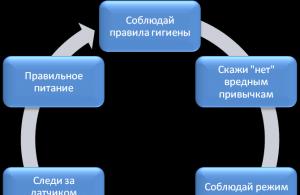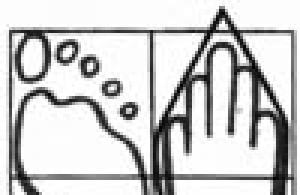Every driver should know and understand what a suspension is and what functions it performs. And it doesn't matter if you have been driving a car for 10 years or just about to get a license. However, many have gaps in this matter, and do not even know what exactly the car suspension affects. But the comfort and convenience that we feel when driving directly depends on it. own car. But, at the same time, when driving over rough terrain, it is the suspension that can cause discomfort. So what is this node responsible for? What parts does it consist of?
It is to all these questions that you can get detailed answers in the article below. However, we will pay attention not only to the structural and functional features that a car suspension has, but also get acquainted with its most common types.
1. Car suspension: all the most important about the design features and functions performed

First of all, it is worth understanding the question, what is a car suspension? At its core, it is a knot or a structure of a specific number of parts that are fastened together in a certain way. What is the suspension for? Thanks to a certain design, it connects the machines with its wheels, thus providing the possibility of movement. Depending on the elements and parts that make up the suspension, as well as the features of their installation, the connection between the body and the wheels can be either rigid or elastic.
Generally Suspension is an element of the chassis of the car and plays a very important role in its functioning. Consider the most common list of parts that make up the integral suspension design of modern cars:
1. Guide elements. It is thanks to them that the wheels are connected to the body and transmit the force of movement to it. Also, thanks to them, the nature of the movement of the wheels relative to the body of the car is determined. Under the guide elements it is necessary to understand all kinds of levers for fastening and connecting parts. They can be longitudinal, transverse and double.
2. Elastic element. It is a kind of "adapter" between the wheels and the car body. It is he who perceives the load from the bumps in the road, accumulates it and transfers it to the body. Elastic elements can be made both from metal and from other affordable and durable materials. Metal - these are springs, springs (cast springs are used mainly on trucks) and torsion bars (in torsion bar suspension types). As for non-metallic elastic elements, they can be made of rubber (buffers and bumpers, but they are mainly used as an addition to metal devices), pneumatic (using the properties compressed air) and hydropneumatic (az and working fluid are used) elements.
 3. Extinguishing device. In other words, this is car shock absorber. It is needed in order to reduce the amplitude of body vibrations, which are exactly what the work causes. elastic element. The operation of this device is based on the hydraulic resistance that occurs during the flow of fluid through the calibration valves from one cylinder cavity to another. Although, in general, a shock absorber can consist of both two cylinders (double-tube) and one (single-tube).
3. Extinguishing device. In other words, this is car shock absorber. It is needed in order to reduce the amplitude of body vibrations, which are exactly what the work causes. elastic element. The operation of this device is based on the hydraulic resistance that occurs during the flow of fluid through the calibration valves from one cylinder cavity to another. Although, in general, a shock absorber can consist of both two cylinders (double-tube) and one (single-tube).
4. Thanks to him, it is possible to counteract the rapidly growing roll that is formed during the implementation of the turn. It works by distributing weight across all wheels of the car. At its core, the stabilizer is an elastic rod, which is connected to the rest of the suspension elements through the racks. It can be installed both on the front and on the rear axle of the car.
5. Wheel support. Located on rear axle and perceives the entire load from the wheel, distributing it to the levers and shock absorber. The same device is on the front axle, only it is called "swivel clack".
6. Fastening elements. Thanks to them, all elements and parts of the suspension are connected both to each other and attached to the car body. The main types of fasteners, which are most often used in the suspension, include: rigid connection with bolts; connection using elastic elements, which are rubber-metal bushings or silent blocks); ball joint.
 In general, there are a fairly large number of types and types of suspensions that can perform different functions and have a different purpose and location. Take for example the rear dependent suspension. Its design is simple and easy to understand. ordinary people: it is held on the car with the help of two sufficiently strong coil springs, and also has an additional fastening on four levers that are in a longitudinal position. In general, this design has a rather small weight, so it has a rather strong effect on the smoothness of the car. But let's still not get ahead of ourselves so fast, and first consider a number of signs behind which car suspension is divided into the following several types:
In general, there are a fairly large number of types and types of suspensions that can perform different functions and have a different purpose and location. Take for example the rear dependent suspension. Its design is simple and easy to understand. ordinary people: it is held on the car with the help of two sufficiently strong coil springs, and also has an additional fastening on four levers that are in a longitudinal position. In general, this design has a rather small weight, so it has a rather strong effect on the smoothness of the car. But let's still not get ahead of ourselves so fast, and first consider a number of signs behind which car suspension is divided into the following several types:
- double-lever and multi-lever;
Active;
Torsion;
Dependent and independent;
Front and back.
Let's go in order and take a closer look at the two- and multi-link suspensions of the car.
What features are hidden behind two- and multi-link automotive units?
 In general, their name comes from the type of attachment, and to be more precise, from the design features of the levers with which these suspensions are attached to the car body. In the first case, they are attached to two transverse levers, one of which is the upper one (it is short), and the second is the lower one (it is longer). Also, specifically to reduce the sensitivity of the car and this unit to shocks that may occur when driving on an uneven surface, there is also an elastic element of a cylindrical shape between these fasteners.
In general, their name comes from the type of attachment, and to be more precise, from the design features of the levers with which these suspensions are attached to the car body. In the first case, they are attached to two transverse levers, one of which is the upper one (it is short), and the second is the lower one (it is longer). Also, specifically to reduce the sensitivity of the car and this unit to shocks that may occur when driving on an uneven surface, there is also an elastic element of a cylindrical shape between these fasteners.
However, such a double wishbone suspension design has a significant drawback, which is associated with extremely rapid tire wear. This happens because the lateral movements of the wheels are very small and this is reflected in the lateral stability of the wheel. But if we talk about the advantages of a double-lever suspension, then one cannot fail to mention the independence that each wheel of a car receives. This feature contributes to the stability of the car when driving over bumps, and also makes it possible to create high-quality and long-term adhesion of the wheels to the road surface.
Now let's try to understand in more detail what a multi-link car suspension scheme is, and how it differs from the one described above. All the main differences can be revealed by the following three points:
- Firstly, it is a more complicated version of the double wishbone suspension;
- Secondly- its design includes ball joints, due to which the softness of the car increases;
- third difference- these are special silent blocks or swivel supports that are mounted on the frame. Thanks to these blocks, reliable sound insulation is provided. car body from wheels in motion.
 On such a suspension, you can also add longitudinal and transverse adjustments, which, by the way, can be installed separately on each independent element. But despite all the benefits that multi-link suspension And possible ways its modernization, it has a serious cost. To give you an idea of the price, let's just say that this type of units are installed only on executive cars. The truth and value of such a suspension is obvious, as it allows for the most precise control of the car's movement on the road and provides excellent contact. wheel tires paved road.
On such a suspension, you can also add longitudinal and transverse adjustments, which, by the way, can be installed separately on each independent element. But despite all the benefits that multi-link suspension And possible ways its modernization, it has a serious cost. To give you an idea of the price, let's just say that this type of units are installed only on executive cars. The truth and value of such a suspension is obvious, as it allows for the most precise control of the car's movement on the road and provides excellent contact. wheel tires paved road.
2. We get acquainted with active and torsion types of automotive components: their main advantages and disadvantages
If you want to find out which types of car suspensions are the most modern and most often installed on supercars, you should definitely familiarize yourself with the active and torsion types of nodes. Let's start in order.
The special attention of car owners deserves Its name comes from the French word "torsion" and is translated into Russian as "twisting", which is the main visiting property of this type automobile node. What is the secret and benefits? The most interesting thing about the design of such a suspension is the presence of a special elastic element, which is made of alloy steel. But what is so special about this steel, you ask?
 The fact is that before being installed on a car, this steel undergoes a number of treatments, thanks to which it acquires the ability to twist around the longitudinal axis of the rod. At the same time, the elastic element itself can have the most diverse cross-sectional shape (square or round), consist of one continuous plate, or be assembled from several separate ones. The most important thing is that at its core it is a prototype of a straightened spring, but with a more good performance and resistance to mechanical stress. How exactly the torsion bar suspension will be installed depends on the type of car. If this is an ordinary passenger car, then the installation is done longitudinally. If we are talking about trucks, then the torsion assembly will be mounted transversely. As you understand, this type of suspension is very convenient when operating a car. In particular, the following advantages should be highlighted:
The fact is that before being installed on a car, this steel undergoes a number of treatments, thanks to which it acquires the ability to twist around the longitudinal axis of the rod. At the same time, the elastic element itself can have the most diverse cross-sectional shape (square or round), consist of one continuous plate, or be assembled from several separate ones. The most important thing is that at its core it is a prototype of a straightened spring, but with a more good performance and resistance to mechanical stress. How exactly the torsion bar suspension will be installed depends on the type of car. If this is an ordinary passenger car, then the installation is done longitudinally. If we are talking about trucks, then the torsion assembly will be mounted transversely. As you understand, this type of suspension is very convenient when operating a car. In particular, the following advantages should be highlighted:
- the elastic element is extremely light, especially when compared with conventional springs;
Compact design.
If you try to explain the meaning and role of elastic parts, then you should next example. If you suddenly need to go to country road with a lot of deep potholes, having on your car torsion bar suspension, You will be able to lift the body without much effort. To do this, you will only need to pull the torsion bars with a special motor, which will allow you to adjust the required height of the road clearance.
 But this is not all the advantages of such a suspension. If you need to change the wheel and at that moment you do not have a jack at hand, with the help of this device you can easily raise the body of the car on three wheels. Probably for this reason, the most widely torsion type automotive suspension is used on military armored vehicles.
But this is not all the advantages of such a suspension. If you need to change the wheel and at that moment you do not have a jack at hand, with the help of this device you can easily raise the body of the car on three wheels. Probably for this reason, the most widely torsion type automotive suspension is used on military armored vehicles.
Now let's pay some attention to active type automotive suspension. When starting to get acquainted with its design, get ready right away: everything here is radically different from the classical design, there are no rods, no helical springs, or any other elastic elements that are mandatory for other types of suspensions. In order to mitigate and completely level out shocks and other unpleasant “consequences” of road surface irregularities, a special pneumatic or hydraulic strut, or a combination of both, is installed on such a suspension. Surprised? Let's try to understand in more detail.
At its core, this design is nothing more than a conventional cylinder, inside which is either a liquid or a compressed gas. The contents of the cylinder are distributed to the aforementioned racks due to the operation of the compressors. The convenience of this type of suspension is directly related to the fact that its use can be fully computerized. So, with the help of electronics, you can completely control the stiffness of the car's depreciation, and compensate for body distortions while driving on slopes and uneven roads.
 Thus, we can sum up the following. The types of suspensions described in this section of the article give the driver a huge number of advantages that start in the comfort of movement and end in the ability to control the operation of the suspension directly from the car. However, they are not suitable for everyone. What is the reason for this, not only old model car or its deterioration, but also price inaccessibility.
Thus, we can sum up the following. The types of suspensions described in this section of the article give the driver a huge number of advantages that start in the comfort of movement and end in the ability to control the operation of the suspension directly from the car. However, they are not suitable for everyone. What is the reason for this, not only old model car or its deterioration, but also price inaccessibility.
3. Dependent and independent suspension - which is more rational to choose?
What's happened dependent suspension probably know those who bought their first car at the end of the last century or even before the collapse of the USSR. We think this gave a hint to everyone - today dependent suspension is considered an outdated option and on modern cars she cannot be found. The only thing is that it is installed on those makes and models of cars, the design of which has not changed for several decades. Of course, we can talk about cars that we have always considered "brainchildren" domestic auto industry- Volga and Zhiguli. Also, dependent suspension today can be found on UAZ vehicles, as well as on older and classic models Jeep.
Why is the suspension called "dependent"? Let's try to explain very simple example: when, being in such a car, you accidentally hit a bump with only one wheel, the angle of the entire suspension axis changes. It is not difficult to guess that there is very little comfort from such a ride. However, do not think that manufacturers have reached insanity, since they still install this kind of suspension. Their most important advantage is the simplicity of design, as well as its low cost, which allows you to drop the price from the cost of the entire vehicle.
 There is another version of the dependent suspension of a car, which today can already be considered "ancient". It's about about the de Dion dependent scheme, the first copies of which were installed on the very first cars. The peculiarity of such a suspension is that its crankcase main gear attached to the car body regardless of the bridge. Now, let's move on to the most modern type suspension, which is independent. In fact, it can be considered complete opposite dependent suspension scheme, since in this embodiment we get the ability to move all four wheels absolutely independently of each other. That is, if one wheel hits a bump, this does not mean at all that all four wheels will bounce. By the way, we have already mentioned one of the options for such an independent suspension, and it is a two-lever system.
There is another version of the dependent suspension of a car, which today can already be considered "ancient". It's about about the de Dion dependent scheme, the first copies of which were installed on the very first cars. The peculiarity of such a suspension is that its crankcase main gear attached to the car body regardless of the bridge. Now, let's move on to the most modern type suspension, which is independent. In fact, it can be considered complete opposite dependent suspension scheme, since in this embodiment we get the ability to move all four wheels absolutely independently of each other. That is, if one wheel hits a bump, this does not mean at all that all four wheels will bounce. By the way, we have already mentioned one of the options for such an independent suspension, and it is a two-lever system.
However, independent suspension can also be performed in other versions, among which it is necessary to draw your attention to the MacPherson strut, which is a very interesting example. For the first time they began to use it back in 1965, and the first car on which it was installed was the legendary Peugeot 204. How does such a suspension function and what elements does it consist of? In fact, there is nothing complicated here:
- one single lever;
A block that stabilizes the suspension roll stability;
The second block, which consists of a telescopic shock absorber and a coil spring.
 Of course, this option is far from a double wishbone suspension. The main disadvantages of the MacPherson circuit are that when driving in a car, a change in camber is felt quite strongly, especially if the car is driving on a high suspension. Also, road vibrations are practically not isolated.
Of course, this option is far from a double wishbone suspension. The main disadvantages of the MacPherson circuit are that when driving in a car, a change in camber is felt quite strongly, especially if the car is driving on a high suspension. Also, road vibrations are practically not isolated.
We hope that our article has helped you to understand in more detail what types of suspensions exist and how they differ from each other. Such information will be useful to you not only in a situation where the car needs repair, but also when purchasing a new one. iron horse". It remains only to recommend that you be more careful when driving a car and always listen to what it “tells” you. Happy travels!
car suspension- a device that provides elastic adhesion of the wheels of the car with carrier system, and also regulates the position of the body while driving and reduces the load on the wheels. Modern automotive industry offers different types car suspensions: pneumatic, spring, spring, torsion, etc.
Suspension guides. A set of devices that connect the wheels and the car body forms the suspension. The main purpose of the suspension is to convert the impact on the car from the road into acceptable vibrations of the body and wheels. These interactions should be such that the car not only picks up speed quickly (accelerates), but can also slow down even faster (up to a complete stop). In addition, the machine must be easy to control and stable while driving. To perform these tasks, the suspension is used, the design of which determines the main operational properties of cars, including traffic safety.
When the car is moving, the wheels move relative to the body and the road in vertical and horizontal directions, as well as at an angle (rotation around the axis, inclination relative to the body and the road, rotation around the axis of rotation - the pivot axis). To meet the requirements related to operational properties vehicle, it is necessary to significantly limit the movement of the wheels. With the transverse (lateral) movement of the wheels in horizontal directions, the track changes, and with the longitudinal - the base of the car. The presence of such movements leads to an increase in resistance to movement, tire wear, deterioration of stability and controllability. The vertical movement of the wheels relative to the body of passenger cars can exceed 20 cm. The angles of rotation of the wheels are 30 ... 45 °.
In order for the car to successfully accelerate and brake, to “keep” the road well, it is necessary to have reliable adhesion of the wheels to its surface. Does suspension affect grip? Undoubtedly. Grip depends not only on the characteristics of the tire tread and the quality of the road, but also on the load that is transferred to the wheels. Change vertical load on the wheels is determined by the deflection of the springs and the efforts of the shock absorbers. With a decrease in the vertical load, the grip of the wheels with the road surface decreases.
The suspension of a car contains the following main devices: guiding devices (levers, struts, rods, extensions), elastic elements (leaf springs, springs, air springs, etc.), damping devices (hydraulic shock absorbers) and, finally, regulation and control devices (height and roll regulators, computers, etc.).
Suspension guides affect the nature of the movement of the body and wheels of the car during vibrations. Whether, for example, the lifting of the wheel will be accompanied by its inclination, lateral or longitudinal movement depends on the scheme according to which the guide devices are made. Guide devices serve to transfer traction and braking forces, as well as lateral forces that occur when turning, moving along a slope from the wheels to the body.
According to the type of guide devices, all suspensions are divided into dependent and independent. At dependent suspension the right and left wheels are connected by a rigid beam - a bridge. Therefore, when one of the wheels hits an unevenness, both wheels tilt in the transverse plane at the same angle. In an independent suspension, the movements of one wheel are not rigidly connected with the movements of the other. Tilts and movements of the right and left wheels are significantly different.
Elastic devices (elastic elements) serve to reduce the loads acting between the wheel and the body. When hitting road bumps elastic elements are deformed. After the passage of irregularities, the elastic elements cause oscillations of the body and wheels. The main characteristic of elastic elements is stiffness, i.e. the ratio of vertical load to deflection (or spring settlement). The elastic elements of the wheel suspension are distinguished not only by design, but also depending on what material they are made of. If the elastic properties of the metal (resistance to bending or torsion) are used, then metal elastic elements take place. Given the elastic properties of rubber and plastics, rubber and plastic springs are widely used. Recently, air springs have been widely used, where the elastic properties of air or gases are used.
Damping suspension devices (hydraulic shock absorbers) are designed to dampen vibrations of the body and wheels. During the operation of the suspension, the energy of the vehicle's vibrations is redistributed between the body and the wheels. Shock absorbers absorb this energy, turning it into heat. The more energy the shock absorber absorbs, the faster the vibrations of the body and wheels will dampen, the less the body will sway. Riding on soft springs without shock absorbers is almost impossible.
It is possible to significantly reduce the inclination and lateral movement of the wheels using a double wishbone suspension scheme. With the help of a short upper and long lower levers, it is possible to reduce the angular and lateral movements of the wheels. The effect of lean (angle) can be reduced by using camber (tilt) in the vertical plane and derailment (difference between the side surfaces of the tire in front and behind) of the wheels. The lateral movement of the wheels can be compensated by the compliance of the tires.
double wishbone suspension has a number of advantages in the location of the main elements: the shock absorber is fixed inside the spring; the spring and shock absorber rest on the lower arm, which reduces the overall height; wishbones reliably transmit pushing and braking forces from wheel to body. Double-lever guides are widely used in front independent suspensions of cars.
Even less angular and transverse movements of guide devices in telescopic spring struts front wheel drive vehicles, where instead of two levers in the transverse plane, one lower wishbone with stretch marks. Such a suspension is called a swinging candle, or, as it is called by the name of the inventor, the MacPherson suspension. If available only lower arm And top support the suspension has minor changes in track and wheel angle, which reduces tire wear and improves vehicle stability. The disadvantages of the scheme include the high location of the upper support, which must be placed in the front of the body, as well as the large loads that occur at the points of attachment of the upper support to the body.
The use of longitudinal levers in the guide devices allows you to avoid changing the inclination of the wheels during vertical movements. However, long trailing arms experience significant loads under the action of lateral forces (during a turn, exit to the side of the road, impacts from road irregularities). With this design of the guide device in independent suspensions, it is difficult to drive to the wheel using cardan gears; to reduce the side roll of the body, it is necessary to install an additional elastic element - the anti-roll bar. Guides with trailing arms are used on the rear suspension of front-wheel drive vehicles.
Elastic suspension elements. Consider the design of elastic elements (springs) of the wheel suspension. The oldest elastic element is the leaf spring. A conventional leaf spring is a package (in the form of a trapezoid) tightened flat steel strips. The longest root sheet has lugs at the ends, with which the spring is attached to the body. Most often, longitudinal leaf springs are installed on the rear suspensions of cars. The more sheets in the package, the more load the spring can take. Increasing the length of the spring makes it possible to increase the deflection and, consequently, the wheel travel, i.e. make the suspension long-stroke and soft. The main feature of leaf springs is that they can play the role of not only an elastic element, but also a guiding device. Through the leaf spring, all the loads arising from the rolling of the wheels are transmitted. Springs transmit pushing forces during acceleration and braking. When driving on a slope, when turning the car, as well as under the influence of other lateral forces, the springs are subjected to torsion. The greatest loads fall on the root sheets of the spring. The durability of leaf springs under heavy loads is significantly reduced. Another feature of leaf springs is the presence of friction between the sheets. Friction forces prevent the deflection of the spring and impair its elastic properties. There is a blocking of the elastic element, and the load from the wheels is transferred directly to the body. As a result, the smoothness of the ride significantly deteriorates. These shortcomings of leaf springs are noticeably manifested when the car is moving over uneven roads that have a small height. Then, with an increase in speed, intense vibrations and noise occur in the passenger compartment. To get rid of the harmful effects of friction, non-metallic gaskets are installed between the sheets.
In addition to these disadvantages, multi-leaf springs have others. In the suspension with such springs, additional elastic elements are installed - stops (buffers) to limit breakdown and increase rigidity; springs have a large mass, short service life, they are difficult to locate in independent suspension systems of a passenger car.
Improving the design of leaf springs led to the creation of the so-called small leaf springs. The sheets of such a spring are strips of variable cross-section along the length. The manufacture of leaf springs is associated with a number of technological difficulties, however, leaf springs of the same load capacity as conventional multi-leaf springs have a significantly lower weight (by 20 ... 30%). They have significantly less intersheet friction. IN last years In order to reduce the weight, attempts have been made to manufacture leaf springs from composite materials.
Metal elastic elements made in the form of twisted springs and steel rods (torsion bars) turned out to be more perfect in comparison with leaf springs. With the same load capacity as leaf springs, the springs and torsion bars have a significantly lower weight and are more durable.
With the advent of front independent suspension, springs have become the most widespread. The simplest coiled springs with a constant wire thickness and a constant winding pitch. Such springs provide the suspension with the necessary wheel travel and low stiffness.
However, soft springs do not allow the suspension to provide protection from shocks and shocks at the end of the wheel travel up (compression) and down (rebound). As a rule, it is necessary to stiffen the suspension with a spring at the end of the compression and rebound stroke, which is achieved by installing additional elastic elements.
As additional elastic elements, rubber or plastic buffers are most often used.
To improve the characteristics of the spring, shaped springs are used with different winding pitch and wire thickness (conical, barrel-shaped, etc.). However, the manufacture of such springs under conditions mass production passenger cars are much more difficult
Through perception active forces and vibration damping. The suspension is part of the chassis of the car.
Vehicle suspension includes guiding and elastic elements, damping device, anti-roll bar, wheel support, as well as fastening elements.
Guide elements provide connections and transfer of forces to the car body. The guide elements determine the nature of the movement of the wheels relative to the car body. All kinds of levers are used as guide elements: longitudinal, transverse, double, etc.
The elastic element perceives the load from the unevenness of the road, accumulates the received energy and transfers it to the car body. distinguish between metallic and non-metallic elastic elements. Metal elastic elements are represented by a spring, a spring and a torsion bar.
Coiled springs made of round steel rods are widely used in passenger car suspensions. The spring can have constant and variable stiffness. A coil spring is usually of constant stiffness. Changing the shape of the spring (using a metal bar of variable cross section) allows you to achieve variable stiffness.
The leaf spring is used on trucks. The torsion bar is a metal elastic element that works on twisting.
Non-metallic include rubber, pneumatic and hydropneumatic elastic elements. Rubber elastic elements (buffers, chippers) are used in addition to metal elastic elements.
The operation of pneumatic elastic elements is based on the elastic properties of compressed air. They provide a high ride smoothness and the ability to maintain a certain amount of ground clearance.
The hydropneumatic elastic element is represented by a special chamber filled with gas and working fluid, separated by an elastic partition.
The damping device (shock absorber) is designed to reduce the amplitude of vibrations of the car body caused by the operation of the elastic element. shock absorber operation is based on hydraulic resistance that occurs when fluid flows from one cylinder cavity to another through calibration holes (valves).
There are the following designs of shock absorbers: single-pipe(one cylinder) and two-pipe(two cylinders). Double-tube shock absorbers are shorter than single-tube shock absorbers, they have a large scope, therefore they are more widely used on a car.
For single-tube shock absorbers, the working and compensation cavities are located in one cylinder. Volume change working fluid, caused by temperature fluctuations, are compensated by the volume of the gas cavity.
A double-tube shock absorber includes two tubes located one inside the other. The inner tube forms a working cylinder, and the outer tube forms a compensation cavity.
In a number of designs of shock absorbers, it is possible to change the damping properties:
- manual adjustment of the valves before installing the shock absorber on the car;
- application solenoid valves with variable area of calibration holes;
- change in the viscosity of the working fluid due to the influence of an electromagnetic field.
Trailing arm suspension is used as the rear suspension of the car. Other types of suspensions can be used both on the front and on the rear axle of the car. Most widespread on the cars received: on the front axle - MacPherson suspension, on the rear axle - multi-link suspension.
On some off-road vehicles and premium cars are installed air suspension, which uses pneumatic elastic elements. A special place in the suspension design is occupied by hydropneumatic suspension, developed by Citroen. The design of pneumatic and hydropneumatic suspension is based on known types of suspensions.
Currently, many automakers are equipping their vehicles with active suspension. Variety active suspension is the so-called. adaptive suspension, which provides for automatic adjustment of the damping capacity of shock absorbers.
Avoiding technical terms, we can say that the suspension is necessary in order to reduce the impact of road bumps on the car body. For this, elastic elements are provided in the design of the suspension. These include springs, springs, and rubber elements (chippers, buffers, silent blocks). There are also pneumatic and hydropneumatic elastic elements.
Metal elastic elements
Springs
Springs, as an elastic suspension element, are currently used in the vast majority of cars. Made from a metal rod of round section, they have constant characteristic rigidity and perfectly cope with the task assigned to them. The coils converge evenly as the load increases and return to initial position when it is removed.
If there is a need for variable stiffness, then the springs are made from a bar of various diameters (in certain areas), or in the form of a barrel (some coils are narrower). In this case, when the spring receives a load, the coils of smaller diameter (thickness) will approach first.
The advantage of the spring, as an elastic element, is the ease of manufacture, which means the final cost of the product, and its low weight. But since it cannot transmit forces in the transverse plane, it requires the vehicle suspension to have complex guiding devices. Which in turn affects both the price and the weight of the entire assembly.
Springs
Another elastic element of the car's suspension are leaf springs. Due to the large weight, compared to the same springs, the springs are mainly used in the suspension of trucks. The spring consists of metal sheets (in very rare cases, reinforced plastic), of various lengths and shapes, interconnected by a bolt in the center, and with clamps closer to the edges. Being equal in width, each plate, depending on the length, has a different degree of convexity. This provides the spring required characteristics. The longest (root) plate is attached to the car body or frame.

There are several basic ways to attach the spring to the body:
- with twisted ears;
- sliding support and false ears;
- rubber pads.
Each of the mounting methods has its own characteristics and characteristics. General requirement to any of the listed methods of fastening - the ends of the plates must be able to move and rotate. During the operation of the spring suspension, the sheets rub against each other. This requires the use of additional lubrication, or the presence of anti-friction gaskets.
Rubber elastic elements of the car suspension
These elements play an auxiliary role in the operation of the suspension, however, they can also be attributed to elastic elements. They primarily help to avoid hitting the metal parts of the suspension against each other, thereby minimizing the noise level. They also increase the rigidity of the main elements and limit the degree of their deformation.
Rubber elements do an excellent job of both compression and rebound. So, for example, polyurethane bumpers installed in the shock absorber strut work great for rebound.
Different shape, as in the case of a spring, determines the performance rubber element. The cone shape allows for smooth characteristics, first shrinks thin, top part, the closer to the thick part, the more elastic the rubber becomes.

Today, step-shaped fenders are often found, having alternating thin and thick parts. This allows you to significantly increase its working stroke.
Pneumatics and hydropneumatics
Air suspension is used in both cars and trucks. passenger transport. Pneumatic elastic element, allows you to change the stiffness of the suspension depending on traffic situation, car load. In modern cars, the air suspension is controlled by electronics, which is able to independently monitor its work, and change it stiff depending on the situation.
Pneumatic elements
Pneumatic elements (air cylinders) change their severity due to the air pressure created inside the compressor. The cylinders are made of oil-resistant and air-tight rubber, contain cord and metal threads, which makes them more rigid and reliable. Hence the name - rubber-cord elastic elements. The wall thickness of such a cylinder is usually from 3 to 5 mm.

Hydropneumatic elements
This elastic element provides greatest comfort for the driver and passengers of the car, as it does an excellent job of damping suspension vibrations. The hydropneumatic elastic element is a chamber with two cavities. One of them is filled with gas, and the other with liquid, which, as you know, have different degrees of compression. Across complex system membranes and valves, liquid and gas interact to varying degrees (depending on the situation), which provides the necessary comfort and elasticity of the car's suspension.
The ubiquity of this pendant is limited, perhaps, only by its high cost.
Progress does not stand still, and every year engineers are getting closer and closer to creating a suspension that is ideal in all respects and will meet all necessary requirements. Perhaps not far off is the day when being in the car (when driving on the most terrible off-road), in terms of comfort, can be compared with sitting on a soft sofa.
Suspension is a set of devices that provide an elastic connection between the sprung and unsprung masses The suspension reduces the dynamic loads acting on the sprung mass. It consists of three devices:
- elastic
- guiding
- damping
elastic device 5, vertical forces acting from the road are transferred to the sprung mass, dynamic loads are reduced and ride smoothness is improved.
Rice. Rear suspension on oblique levers of BMW cars:
1 – cardan shaft driving axle; 2 - support bracket; 3 - axle shaft; 4 - stabilizer; 5 - elastic element; 6 - shock absorber; 7 - suspension guide lever; 8 - bracket support
Guide device 7 - a mechanism that perceives the longitudinal and lateral forces acting on the wheel and their moments. The kinematics of the guide device determines the nature of the movement of the wheel relative to the carrier system.
damping device() 6 is designed to dampen vibrations of the body and wheels by converting vibration energy into heat and dissipating it into the environment.
The design of the suspension must provide the required smoothness of travel, have kinematic characteristics that meet the requirements of vehicle stability and controllability.
dependent suspension
Dependent suspension is characterized by the dependence of the movement of one wheel of the axle on the movement of the other wheel.

Rice. Scheme of dependent wheel suspension
The transfer of forces and moments from the wheels to the body with such a suspension can be carried out directly by metal elastic elements - springs, springs or using rods - a rod suspension.
Metal elastic elements have a linear elastic characteristic and are made of special steels with high strength at large deformations. Such elastic elements include leaf springs, torsion bars and springs.
Leaf springs are practically not used on modern passenger cars, with the exception of some models of multi-purpose vehicles. It can be noted the models of passenger cars that were previously produced with leaf springs in the suspension, which continue to be used at the present time. Longitudinal leaf springs were installed mainly in the dependent wheel suspension and served as an elastic and guiding device.
On cars and trucks or minibuses, springs are used without springs, on trucks - with springs.

Rice. Springs:
a) - without a sprung; b) - with a sprung
Springs as elastic elements are used in the suspension of many cars. In the front and rear suspensions manufactured by various companies in most passenger cars, helical coil springs with a constant bar section and winding pitch are used. Such a spring has a linear elastic characteristic, and the necessary characteristics are provided by additional elastic elements made of polyurethane elastomer and rubber rebound buffers.
On passenger cars Russian production in suspensions used cylindrical coil springs with constant bar section and pitch in combination with rubber impact buffers. On vehicles manufactured by other countries, such as the BMW 3 Series in rear suspension a barrel-shaped (shaped) spring is installed with a progressive characteristic achieved due to the shape of the spring and the use of a bar of variable cross section.

Rice. Spiral springs:
a) a cylindrical spring; b) barrel spring
On a number of vehicles, a combination of coil and shaped springs with variable bar thickness is used to provide progressive performance. The shaped springs have a progressive elastic characteristic and are called "mini-blocks" for their small height. Such shaped springs are used, for example, in the rear suspension of Volkswagen, Audi, Opel, etc. Shaped springs have various diameters in the middle part of the spring and along the edges, and the “miniblock” springs also have a different winding pitch.
Torsion bars, as a rule, of round section are used on cars as an elastic element and a stabilizer.

The elastic torque is transmitted by the torsion bar through splined or square heads located at its ends. Torsion bars on a car can be installed in the longitudinal or transverse direction. The disadvantages of torsion bars include their large length necessary to create the required stiffness and suspension travel, as well as the high alignment of the splines at the ends of the torsion bar. However, it should be noted that torsion bars have a small mass and good compactness, which allows them to be successfully used on passenger cars of medium and high classes.
Independent suspension
Independent suspension ensures that the movement of one wheel of the axle is independent of the movement of the other wheel. According to the type of guiding device, independent suspensions are divided into lever and MacPherson suspensions.

Rice. Scheme of independent linkage wheel suspension

Rice. MacPherson independent suspension scheme
Link suspension- suspension, the guiding device of which is a lever mechanism. Depending on the number of levers, there can be double-lever and single-lever suspensions, and depending on the swing plane of the levers - cross-lever, diagonal-lever and longitudinal-lever.
List of types of car suspensions
This article discusses only the main types of car suspensions, while there are actually many more types and subspecies of them, and besides, engineers are constantly developing new models and refining old ones. For convenience, here is a list of the most common. In the following, each of the suspensions will be considered in more detail.
- Dependent suspensions
- On a transverse spring
- On longitudinal springs
- With guide levers
- With support pipe or drawbar
- "De Dion"
- Torsion-lever (with connected or mated levers)
- Independent suspensions
- With swing axles
- On trailing arms
- spring
- Torsion
- hydropneumatic
- Pendant "Dubonnet"
- On double trailing arms
- On slanting levers
- On double wishbones
- spring
- Torsion
- Spring
- On rubber elastic elements
- Hydropneumatic and pneumatic
- Multi-link suspensions
- candle pendant
- Pendant "MacPherson" (swinging candle)
- On longitudinal and transverse levers
- Active suspensions
- Pneumatic suspensions









